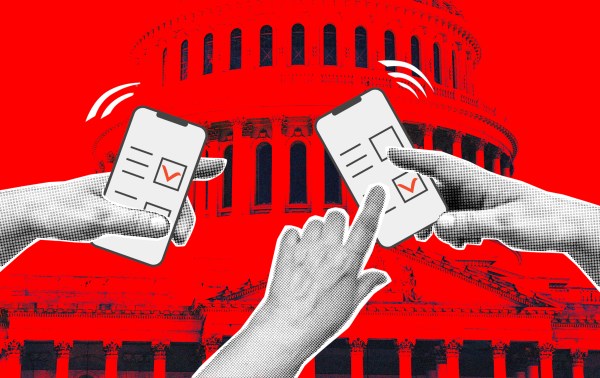The Social Security system’s persistent and growing deficits are scheduled to bring trust fund insolvency within nine years, which would force a 23 percent benefit cut. Yet most lawmakers refuse to discuss solvency reforms because voters (and many lawmakers themselves) have fallen victim to common myths about Social Security’s finances.
Some myths are a matter of semantics, such as the notion that “Social Security is not an entitlement.” While those who make that claim are pushing back on the idea that the recipients are undeserving benefits are unearned, Social Security is legally classified as an entitlement because anyone who meets the eligibility criteria is legally “entitled” to their benefits with no annual congressional spending cap (at least until Congress decides to change the law). It’s just a budgetary term. Other fallacies distort past history or underestimate the severity of the problem. Here are the top 10 myths that are keeping us on the path to insolvency.
“Social Security cannot run deficits.” This is not true. In 2024, Social Security will collect $1.308 trillion in payroll taxes (and related revenues) and spend $1.459 trillion in benefits. The resulting $151 billion shortfall will be funded by deficit spending that contributes to the national debt. Because the Social Security system ran $3 trillion in surpluses from 1983 to 2009, it is legally entitled to run $3 trillion in deficits until these two figures balance out, which is currently expected to occur in 2033. In addition, the Social Security system receives annual interest payments from the Treasury ($62 billion this year), and in the past has received general fund transfers to pay for payroll tax relief—all of which contribute to budget deficits.
“Social Security ‘insolvency’ is a fictional scare tactic.” Current law mandates that when the trust fund balance hits zero—which is when the $3 trillion in earlier surpluses has been repaid—the system will be legally forbidden from borrowing or receiving any more general revenues. Program spending must then fall to match the system’s revenues, and that will mean an automatic across-the-board 23 percent benefit cut. This is not some hypothetical scare tactic, but rather the law that will be implemented if lawmakers continue to refuse reform. Skeptics counter that they were warned about Social Security insolvency 30 years ago and nothing happened. This misinterprets the earlier warnings. In 1999, the Social Security trustees warned that Social Security’s old-age benefits trust fund would reach insolvency in 2036. In 2023, they warned it would be insolvent by 2033. In other words, the projected insolvency date has moved forward, not backward. Reform advocates made a push in the 1990s and 2000s not because insolvency was imminent, but rather to allow reform to be gradually phased in while the baby boomers were still young enough to adjust their retirement strategies. The failure to reform the system back then will leave future reforms more drastic and painful.
“The trust fund is real and was raided by Congress.” The myth presupposes that the trust fund was a large savings account being saved for future retirees until Congress broke in and spent it. In reality, the federal government had no practical or legal mechanism to “save” the $3 trillion surplus that the system generated from 1983 to 2009. By design, those surpluses were always going to be mixed with general revenues and spent regardless of any congressional action. The trust fund balance was merely an accounting device that tracked the size of that initial cumulative surplus so that the system would be entitled to run equal-sized deficits later (i.e., drawing down that balance). Yes, those earlier surpluses were invested in Treasury bonds. But that just means the government lent the money to itself to spend. When the lender and borrower are the same entity (the federal government), the net effect is zero and no new financial resources are created. In this case, the bonds are assets to the Social Security Administration (i.e., future retirees) but equal liabilities to the Treasury (i.e., the future taxpayers repaying those bonds). This means the trust fund does not save future taxpayers a dime—all future benefits must be funded by concurrent taxes and borrowing, the same as if no trust fund existed.
“Reform can wait until insolvency is near.” Between 2008 and 2030, 74 million baby boomers will have retired into Social Security. Delaying reform until 2033’s insolvency date would leave these boomers—some of whom will be approaching age 80—too old to absorb any programmatic reforms. Additionally, higher benefit levels and a larger national debt will dig a deeper fiscal hole and necessitate more drastic reforms. Delay just raises costs, and phasing in gradual reforms can give older Americans time to adjust their financial strategies.
“Seniors get back only what they paid in.” Today, the typical middle-income retiring couple will have paid $783,000 into Social Security and will receive $831,000 in benefits—all adjusted into net present value. Lower-income individuals, and one-earner couples often come out far ahead with respect to their lifetime payroll taxes.
Relatedly, most seniors are not too poor to absorb reforms. Seniors were undoubtedly poor when Social Security was created in the 1930s. Today—while some certainly struggle—seniors are the wealthiest age group and the wealthiest generation in American history. Seniors have the lowest poverty rate of any age group, and their average household incomes have grown four times as fast as the average worker since 1980. Millions of retiree households continue to earn incomes greater than $100,000 even after retirement, driven by (non-housing) net worths in the millions. Because most retirees are wealthier than the taxpayers financing their benefits, Social Security today largely redistributes income upward, not downward. While Social Security was meant only to supplement savings and personal retirement funds, any reforms can easily protect the remaining low-income seniors by raising the minimum benefit to 125 percent of the federal poverty line.
“These earned benefits are a solemn bond that cannot be altered.” Social Security parameters have never been untouchable. Payroll tax rates have increased, Social Security benefits have been taxed, and eligibility ages hiked. Additionally, benefit formulas are designed to become even more generous to each successive generation (well beyond inflation adjustments). President Richard Nixon signed into law a permanent 20 percent benefit hike two months before the 1972 election. In 1983, lawmakers averted an impending trust fund insolvency by scaling back benefits, raising taxes, and increasing the eligibility age. The idea that Social Security taxes and benefits are immutable and can never be revisited is wildly ahistorical.
“Just a few tweaks can save Social Security.” From 2023 to 2053, Social Security is projected to collect $69 trillion in payroll and benefit taxes, while spending $92 trillion on benefits (plus $15 trillion in interest costs resulting from those shortfalls). While Social Security reform is relatively straightforward—its three reform levers are benefits, payroll taxes, and the eligibility age—closing a $23 trillion shortfall will require significant reforms that involve each lever.
“Allowing young people to opt out can fix the system.” If lawmakers were designing Social Security from scratch today, the optimal system would empower workers to more easily pre-finance their own retirement. However, the current system requires that each generation finances the older generation’s benefits. So letting young people divert their payroll taxes out of Social Security would leave no funding source to pay the benefits of current and upcoming retirees. If, say, one-third of the aforementioned $69 trillion in projected 30-year payroll tax revenues are diverted into the taxpayers’ own private accounts, that would leave $23 trillion less to pay the promised benefits to current seniors, doubling the 30-year shortfall to $46 trillion (plus interest). Transitioning to a new system would require one generation to finance both their parents’ promised benefits and pre-fund their own benefits, with a transition cost in the tens of trillions of dollars. Similarly, some suggest investing Social Security’s “surpluses” in high-performing stocks. This presumes the system is still running annual surpluses, and that the trust fund is a real savings account. For the Social Security Administration to invest its bonds in a different instrument, it would first need Treasury to immediately repay the $3 trillion (by borrowing and adding $3 trillion to the budget deficit), and then hope that its investments yield a higher return than the interest rate Washington is now paying on that $3 trillion in additional borrowing. Such an outcome is not guaranteed because the steep borrowing spree would likely raise Washington’s interest rate cost, while flooding investment markets with $3 trillion in new cash would dampen the typical returns (to say nothing of the perverse incentives created by Washington investing in private entities).
“Eliminating the FICA tax cap would bring permanent solvency.” Social Security taxes are limited to the first $168,600 of a worker’s wages for a good reason: Benefits are also capped, and Social Security is designed as a social insurance program that (at least somewhat) “earns” individual benefits by linking them to individual contributions. Eliminating the tax cap would either raise benefits as well (reducing the proposals’ savings), or—if the accompanying benefits are canceled—turn Social Security into a true welfare program by delinking contributions and benefits. Moreover, eliminating the cap would not bring permanent solvency or avert the need for benefit changes. Social Security’s annual deficits are projected by the Congressional Budget Office to eventually settle around 1.8 percent of GDP. Yet completely eliminating the FICA cap—and canceling all resulting benefit hikes—would raise 0.9 percent of GDP, or close merely half of the gap. The system would return to deficits by 2029. Lawmakers would still need to reform benefit levels and the eligibility age.
“Even closing half the shortfall makes removing the FICA cap a no-brainer.” Not if you have other federal funding priorities. The top marginal tax rate on wages already approaches 50 percent when combining the 37 percent federal income tax rate, 2.9 percent Medicare tax, 0.9 percent additional Medicare tax, and state tax rates exceeding 10 percent in California and New York (where many of these high earners reside). Uncapping the 12.4 percent Social Security FICA tax would push the top marginal tax rates on labor well into the 60s in the highest-earning states. This approximates the revenue-maximizing rate according to consensus economic research, with additional revenues from any higher tax rates rapidly approaching (or reaching) zero. This means that—with the exception of a few modest tax tweaks—uncapping the payroll tax to finance Social Security would leave no pot of potential tax-the-rich revenues to close Medicare’s much larger funding shortfall or fund progressive priorities such as climate change mitigation, free college, student loan forgiveness, health care coverage expansions, K-12 education, infrastructure, childcare, family leave, safety net, and housing. Progressives would need to sell (strongly unpopular) middle class taxes to finance the rest of their agenda, as well as to address the massive Medicare shortfalls that will drive deficits steeply upward. So the key question is whether ensuring that (mostly) wealthy baby boomers can receive Social Security benefits well-exceeding their lifetime contributions is really the best use of the limited pot of remaining tax-the-rich revenues.
Demagoguing Social Security reform will not make its funding problems disappear. The system’s economic and mathematical challenges are real and cannot be fixed with gimmicks or self-righteous complaints about Congress, trust funds, or past policies. Politicians who dismiss all plausible reforms are essentially endorsing an automatic 23 percent benefit cut in 2033.






Please note that we at The Dispatch hold ourselves, our work, and our commenters to a higher standard than other places on the internet. We welcome comments that foster genuine debate or discussion—including comments critical of us or our work—but responses that include ad hominem attacks on fellow Dispatch members or are intended to stoke fear and anger may be moderated.
With your membership, you only have the ability to comment on The Morning Dispatch articles. Consider upgrading to join the conversation everywhere.